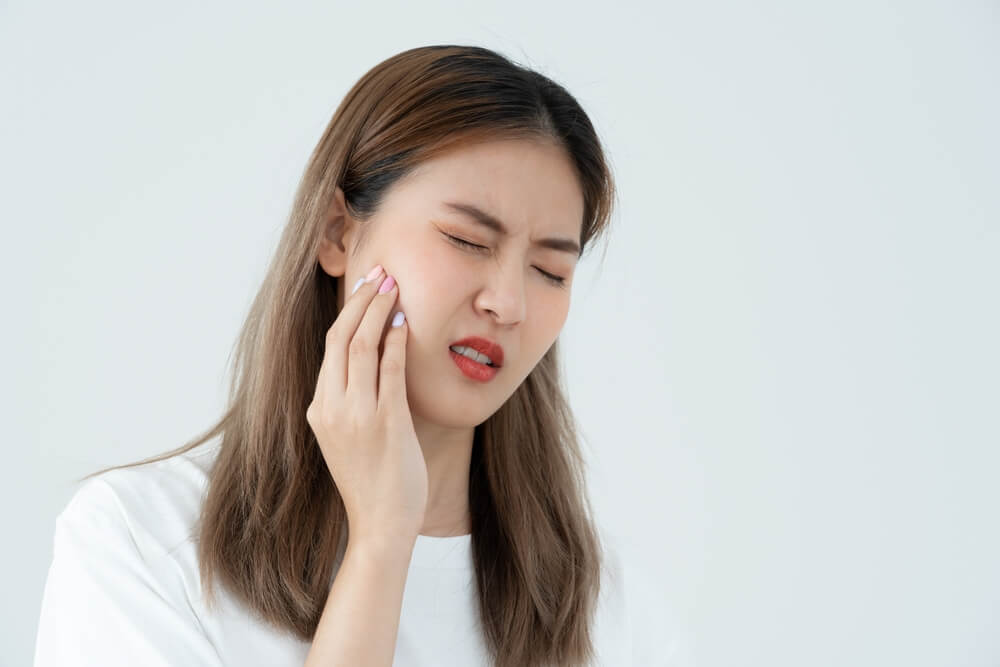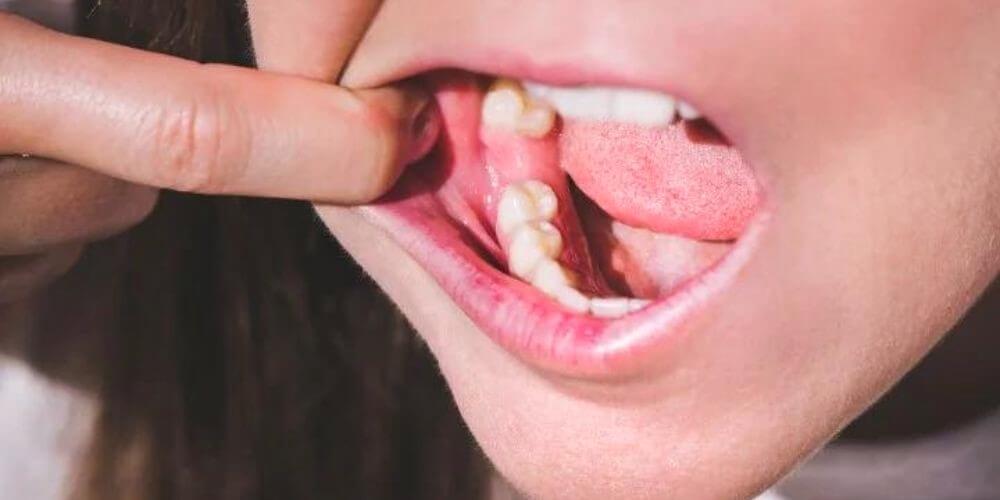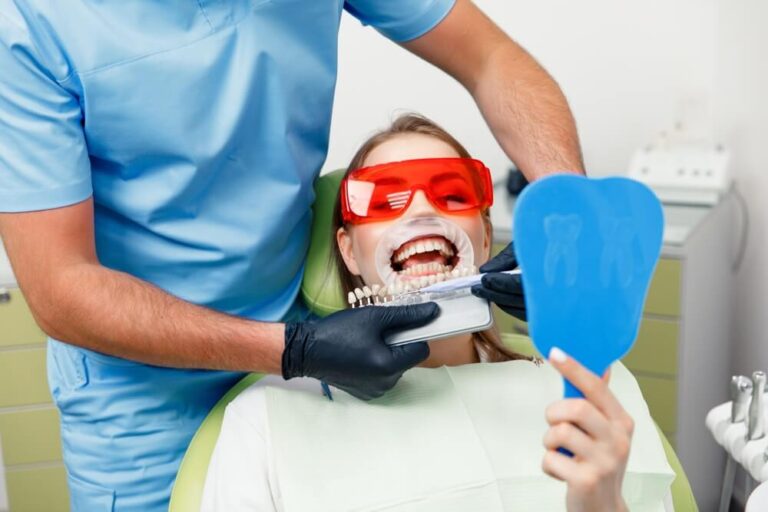Many of the People asked, what are bone spurs? A bone spur is a little piece of bone that might be left behind after your tooth has been extracted. It’s pretty common. And sometimes what that will do is work its way up to the surface, like a sliver in your hand, works its way out. Same thing with that little piece of bone. So sometimes you have to go back in to see your dentist and have that little piece removed. That’s what’s called a bone spur.
Bone Spurs and Bone Chips: What’s the Difference?
Today’s topic is all about bone spurs, and most of the people request from this topic. I did a lot of research on this because, like many of us, I thought bone spurs were like loose bone chips, but they’re not. I’m here to clarify everything.
What are Bone Spurs?
Bone spurs are not the loose bone chips we often think about. After a tooth extraction, your jaw may have jagged edges in the socket where the tooth used to be. These jagged edges are bone spurs. They usually smooth out over time as your bone naturally heals and fills in the gaps. Most of the time, there’s no need for surgery, and adjustments to dentures might only make things worse by creating a bigger gap once the bone shrinks and smooths.
What are Bone Chips?
Bone chips, on the other hand, are the small slivers of bone or tooth fragments that remain after an extraction. Your body has a natural defense mechanism that pushes these fragments out on its own. You don’t always need to rush to a dentist because these bone chips can often be taken out by yourself when they show through the skin. If the fragment is small, you can simply use sterilized tweezers to remove it.
Pain and Healing
The pain you feel from bone spurs or chips is typically due to your denture putting pressure on the healing area. It’s important to wait for things to smooth out naturally instead of adjusting your denture right away, which could make the fit worse later. Saltwater rinses are a great way to keep the area clean and help with the healing process.
For those larger bone fragments, especially if they’re painful, you might want to visit your dentist. But in most cases, the body will push out smaller fragments on its own.
Take a Step
Remember, bone spurs and bone chips are not the same. Bone spurs are jagged edges of the jaw that smooth out over time, while bone chips are leftover fragments that your body pushes out. Both can be uncomfortable but are typically not a cause for alarm. With time, proper care, and patience, everything will heal.
Today I am share you about my bone spur issue, you have to learn about bone spurs now bone spurs.
I call Splinters in the mouth the reason why?
Because they are very, very small pieces of a chip of a tooth. Bone whatever you want to call it in your gums to very painful any type of pressure on them hurts.
Why do you get bone spurs in your mouth?
So after a tooth extraction or a full mouth extraction for dentures, you can’t have little fragments of bone in your gums left over. It’s not something that your dents did wrong, it’s just something that happens. And so your body is trying to get rid of those bone spurs while tailing your gums. And so those bone spurs will get slowly pushed out and will sometimes they’ll eventually just go away. A lot of times they’ll come to the surface and be painful.
After Tooth Extracted
Now when I had my 2014 extracted a year and a half ago I developed about ten to 15 bone spurs and they were pretty painful two. I had to have them removed by my dentist, the rest I’ve removed by myself, so remove them by yourself. You have to be careful. I’m not saying you should do this. I’m just giving you my advice and what I would do if I went to the dentist. Every time I had a bone spur, I’d be there nonstop and that would be very expensive. And so when I had the two front bone spurs that I had to have removed, they basically took some little clippers and went there, just snipped it right off and it was kind of painful. It was raw and sore right there for a few days. But the rest of the bone spurs I’ve removed to my own.
How can I prevent this pain?
So once you have a bone spur going sticking through your gums and it’s causing pain, you’ll feel the sharpness of it poking through and that’s the only time you can remove them by yourself if they’re not poking through, don’t bother. So, I just want to give a little caution. I’m not saying this is exactly what you should do. I’m just giving my experience of what I did. If you have any concerns, you will want to talk to your dentist. But this is what I did. So what I did is I went to my local Walgreens and bought some oral numbing liquid. It’s only a few bucks and it is basically where the bone spur is. I would take a drop of that numbing liquid and put it right there on top of it and I would let it sit there for a few. So it gets number because trying to move the bone spur with already sensitive gums and this thing sticking out of your gums is very painful.
But with a numbing liquid, it didn’t hurt. So once I found the spot, put the numbing liquid on it, let it sit for a minute, and then I would use some very clean sterile tweezers to reach in there and carefully grab it and pull it out. And these bone spurs are so small. It’s really surprising how small and painful they are.
And so you just grab it carefully and sometimes you can’t get a good grip. You have to keep messing with it or wait another day until it starts poking through more so after I’ve ever removed the bone spurs. I would have some bleeding, just a little bit, nothing crazy, nothing like your teeth getting pulled out. So I would just wipe the blood away, and I would gargle with some warm salt water to help clean it out. But that would work pretty well, and like I said. I did this about ten times removing all these bone spurs. I had them all over the bottom, the top. They were kind of frustrating, but you give it a little bit once to stick through enough, and you get the habit of figuring out which way it’s sticking through. It could be poking through going up, going down to left, right, whatever way, and then go and grab it from that way and slowly pull it out. And it’s like instant relief. I mean you don’t feel anything anymore, so it’s a nice way of getting rid of that frustration and pain. I hope it helped you in any way.
Causes of Bone Spurs in Mouth
Dental Procedures
Procedures like tooth excretion, dental implants, poor dental care, and Malnutrition can result in bone spurs in the mouth. These are procedures used in dental surgery. Excretion becomes important when the tooth gets damaged above the treatment level and Dr. implants new teeth when the old one gets severely damaged by tooth decay. So these critical procedures may lead to bone spurs in the mouth.
Traumatic Injury
Tooth and jaws work as a combined system in our mouth so the jaws can feel whatever happens to our teeth, i.e., injury or something else. In this order, the jaws will also affect their working if teeth go through trauma. For your understanding, just imagine that teeth are bones and the jaws are the strong screws that hold and maintain the shape of teeth. So affected jaws may have a bad impact on teeth and commonly, it results in bone spurs in the mouth.
Diseases
Diseases like tooth excretion or oral surgery may result in the result of bone spurs in the mouth. It is common in kids while they are growing from kid to adult phase. Bone Spur grows when two bones meet in different areas of the body like the knee, hip, spine, and teeth. Bone spurs are not an alarming situation except in the teeth portion because in this area you must go through surgery to get rid of it otherwise it’s normal in all other parts of the body.

Treatments Options
Bone spurs in the mouth can feel terrible because they are sharp and can damage you; however, usually, you do not have to worry about it. You just need a treatment immediately, to remove the bone spur.
You must visit your dentist and make a removal appointment as quickly as possible. This surgery normally involves a quick removal, which shouldn’t cause more pain. The treatment is minimally pushy, and your gums should recover after removal.
Prevention Options
Generally, there’s no treatment for preventing bone spurs because they happen due to a dental issue like tooth extraction, and also result from traumatic injury to your mouth. As a result, you are suffering from bone spurs in the mouth that need to be removed by a dentist.
Many other things can lead to bone spurs in your mouth. Poor oral hygiene can increase the chances of them occurring; however, seeking medical advice and a regular dental checkup is best to prevent this disease. Never try to DIY bone spur extraction.

Symptoms Options
Following are the main symptoms that alarm you might go through from Bone Spurs in Mouth.
- You might feel roughness on your gums.
- White color bone-looking figment stuck in your gums.
- Feel pain in your mouth.
- You feel tiny sharp flakes stuck in one area of your teeth.
- You may feel headache, fever, redness, inflammation, and Pus.
FAQs
Can you treat Bone Spurs by yourself?
Generally, it is not possible to disband bone spurs naturally. An individual should try some procedures for managing their symptoms and improving joint function. Often, bone spurs cause no symptoms.
How can Bone Spurs Treated?
You must consult with your dentist for a bone spur removal as quickly as possible. Surgery for a Bone Spur in Gum usually involves a quick removal, which shouldn’t cause more pain. The treatment is minimally invasive, and your gums should recover after removal.
What does a Bone Spurs feel like?
A bone spur in the mouth usually feels sharp, making you feel like something is wrong with it. The good news is that your dentist can take these out quickly and provide the necessary treatment.
How to prevent Bone Spurs?
There is no treatment for preventing bone spurs because they happen due to a dental issue like tooth extraction, or traumatic injury to your mouth. Because of this, you might have recurring bone spurs that need to be removed by a dentist.
How to identify?
- Roughness on gums.
- White bone-looking fragments stuck in your gums.
- Pain in the mouth.
- Discomfort
- Slight infection, including. headache. fever. pus. redness. inflammation.
Conclusion
In summary, bone spurs in the mouth can be uncomfortable and require prompt attention, especially if caused by dental procedures, injury, or poor oral hygiene. Although bone spurs typically aren’t alarming in other parts of the body, they can be problematic when they appear in the mouth due to their potential to cause pain and irritation. Regular dental checkups and good oral hygiene can help minimize the risk. If you experience any of the symptoms, such as sharp pain or visible bone fragments in your gums, it is essential to consult your dentist for proper treatment.







